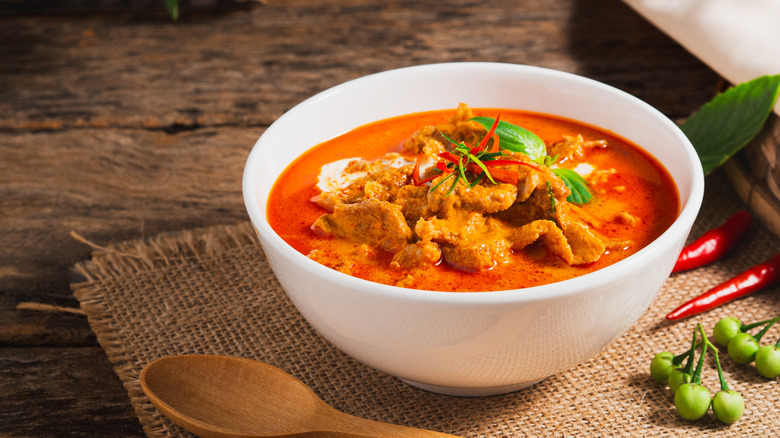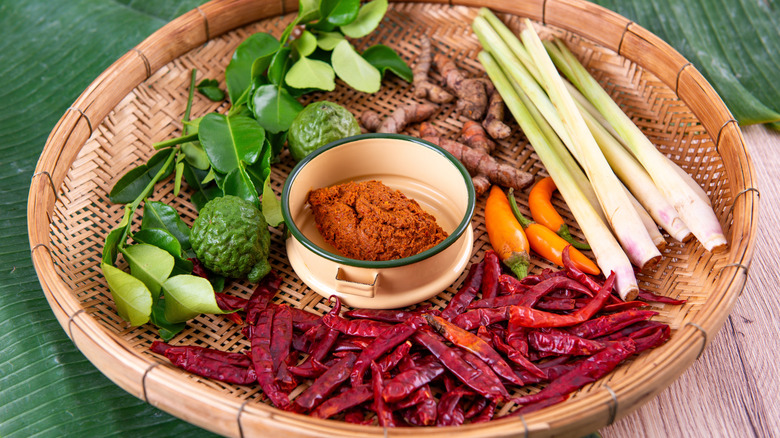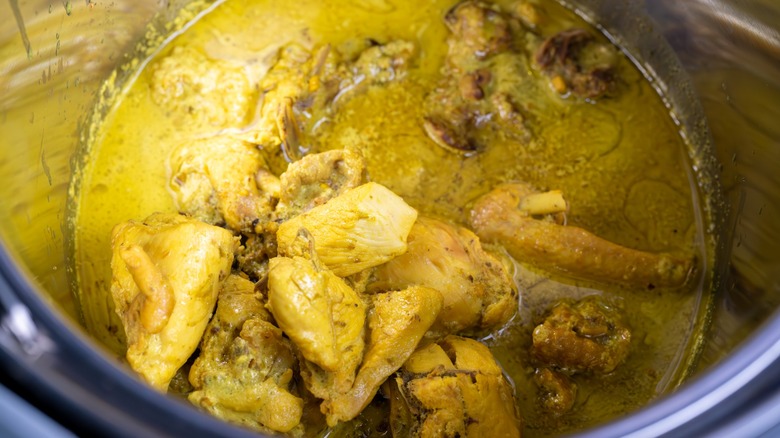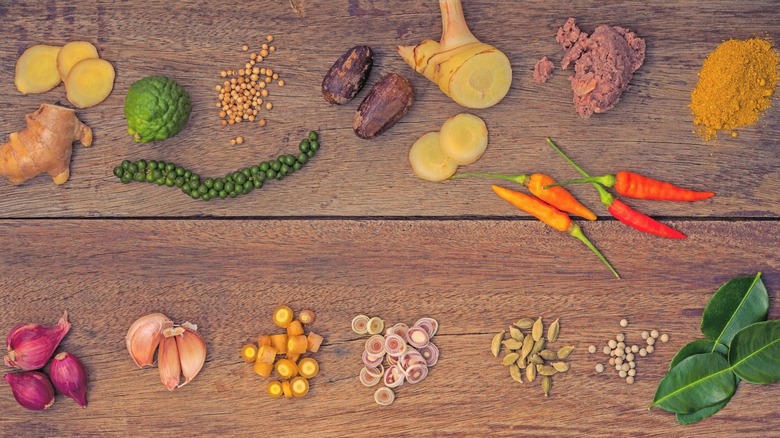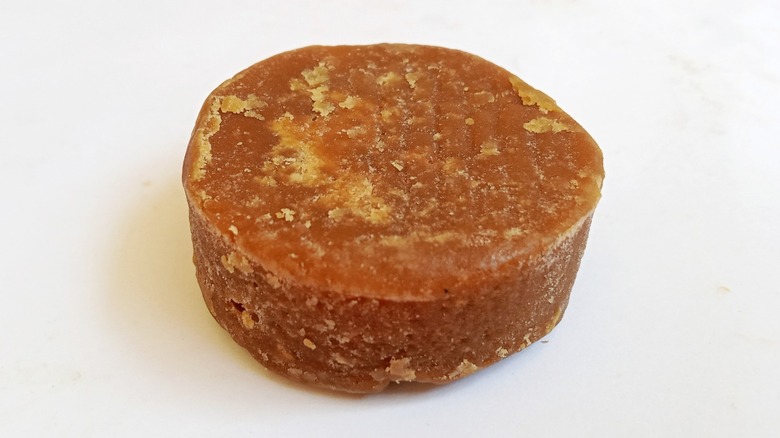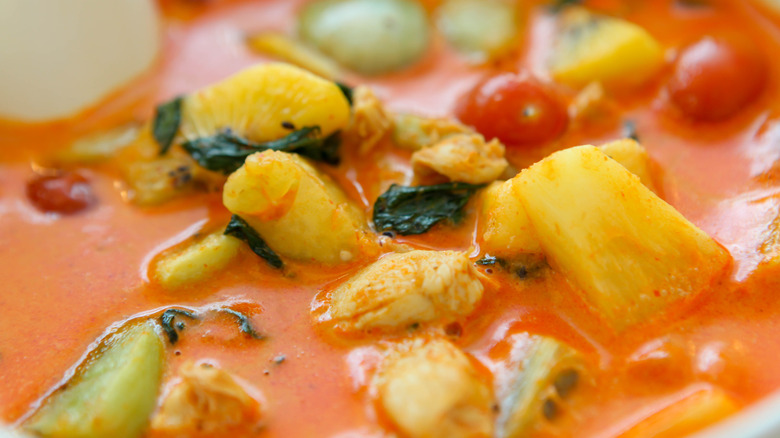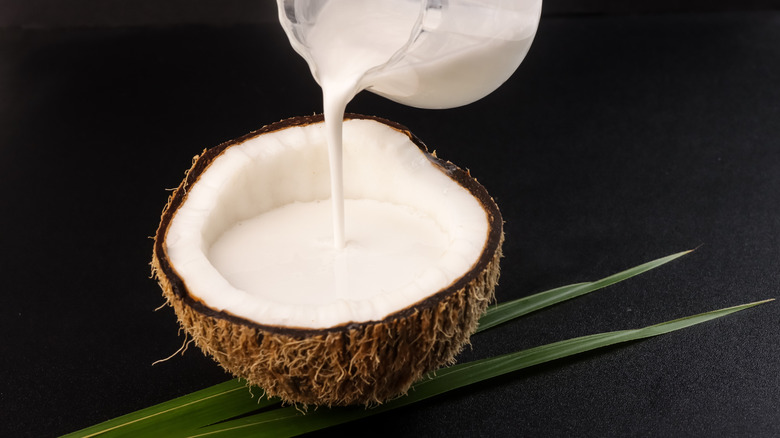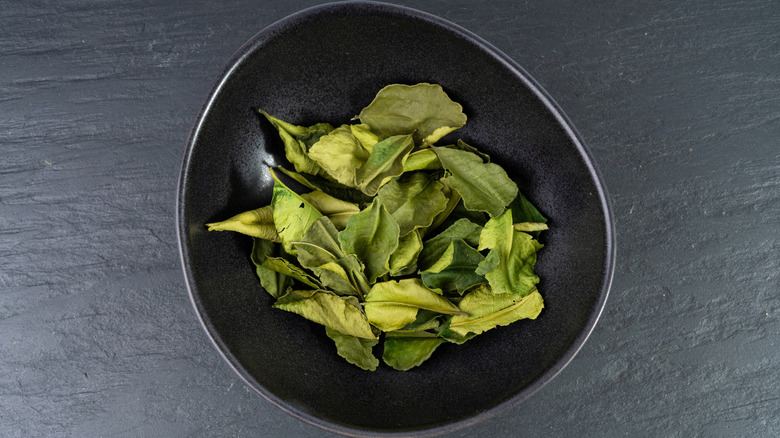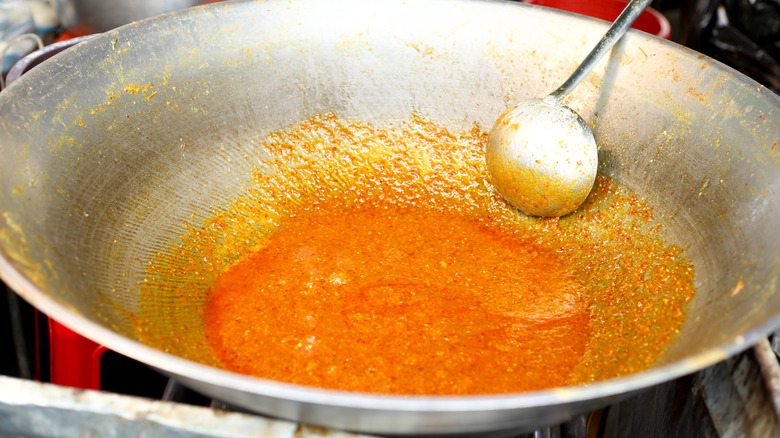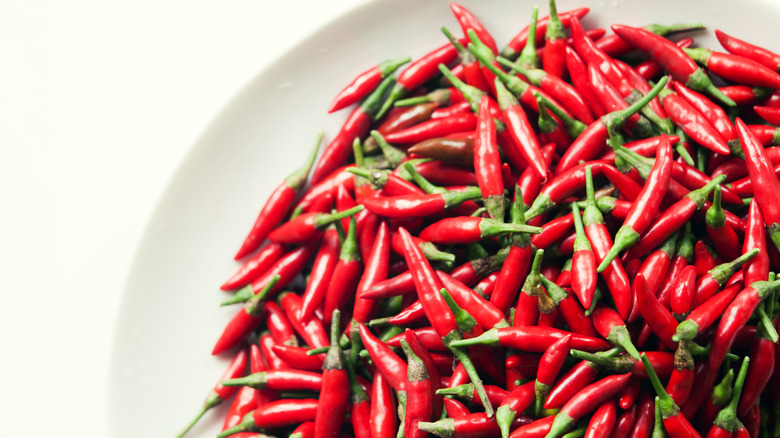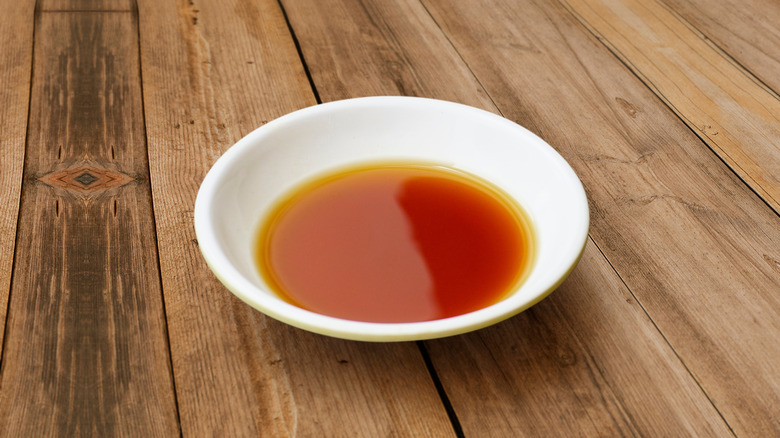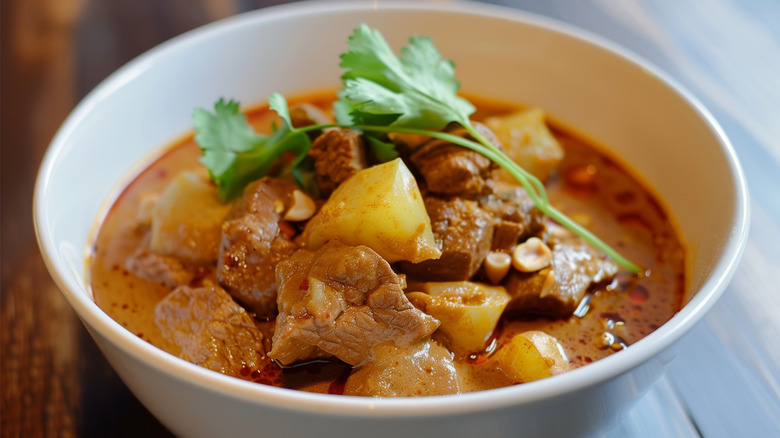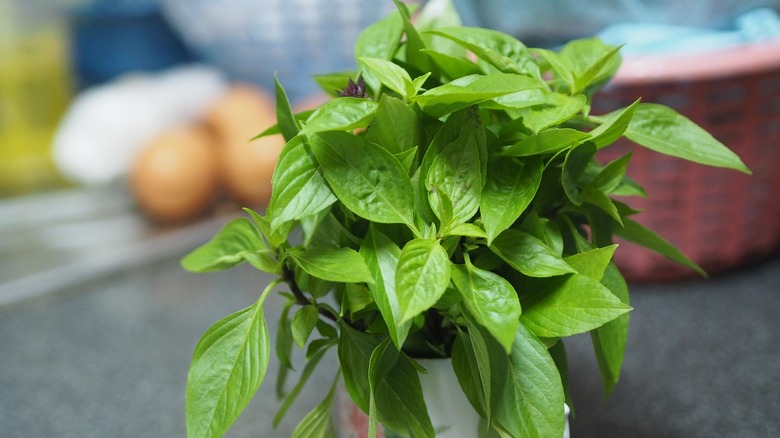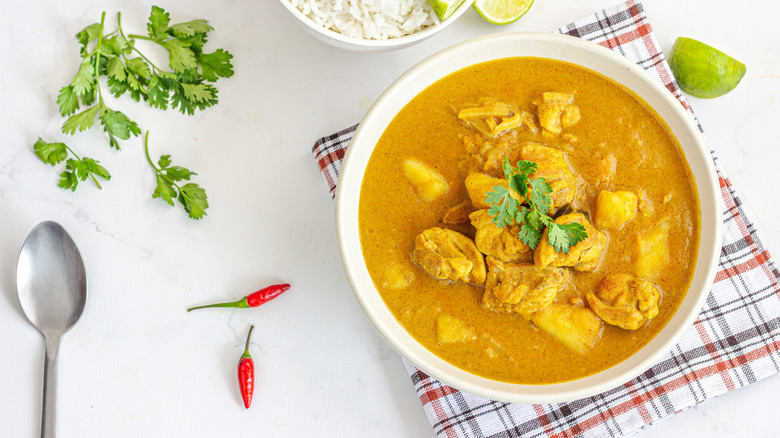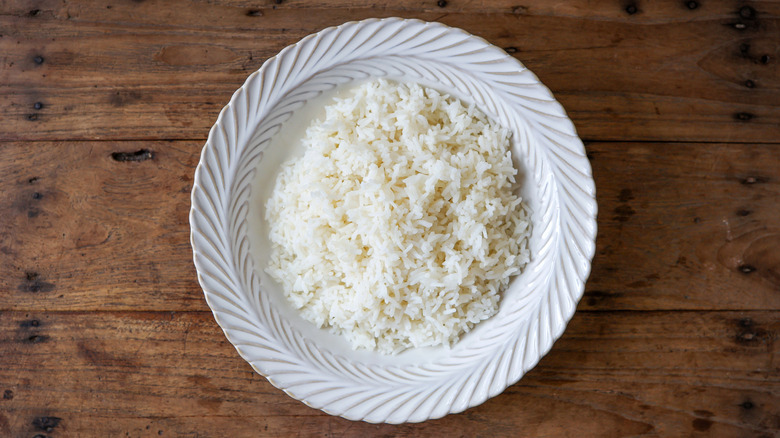Why Thai Curries Always Taste Better At A Restaurant Vs At Home
Of all the intoxicating smells that drift through the air at a Thai restaurant, the scent of a just-cooked curry might be the most alluring. These curries are the perfect balance of salty, sweet, funky, and creamy, packing wild amounts of well-balanced flavor into every spoonful. So why is it so hard to get the same result at home? On paper, these curries look easy: All they need is a paste (which you can find pretty easily in most stores these days), some coconut milk, and a couple of extra ingredients, right?
As with many things that look simple, there's a bit more to making Thai curry than that. These dishes may come together quickly, but they require a level of understanding about the flavors that go into the dish and how they interplay with each other to get it just right. "Thai curry is the storytelling about our culture and life from different regions of Thailand," Kalaya Thai Kitchen Chef Nok Suntararon explained to Food & Wine, and knowing the difference between distinct regional styles of curry and their ingredients will prevent your dish from turning into an anonymous-tasting mess. It will also help you track down the best ingredients for your homemade Thai curries — and trust us, doing this will make all the difference.
Restaurants often make their curry pastes from scratch -- or buy the best stuff
Thai curry pastes can vary enormously in flavor, quality, and freshness, and figuring out which one to use is often a number one priority for restaurant chefs. It's not uncommon for restaurants to make their own pastes from scratch instead of reaching for store-bought varieties, provided that they have the time and resources (and, of course, the inclination). Thai curry pastes are designed to be fresh and fragrant, and making them from scratch, either with a pestle and mortar or a food processor, allows the herbs that go in them to remain sprightly and sharp.
However, that doesn't mean that all Thai restaurants make their own paste, and some places are more than happy to use store-bought varieties. The key, though, is to choose the best kinds. "There should be nothing apart from herbs, spices, salt, and shrimp paste. No oils, no additives, no water," says "Hot Thai Kitchen" author Pailin Chongchitnant to Bon Appetit. Maesri and Mae Ploy are two brands to look out for; they both make quality Thai curry pastes that retain their freshness.
Chefs add their ingredients in a specific order
Curries can be made in a million different ways, with their ingredients going in a million different orders. With Thai curries, though, the order is usually fairly set — and it all begins with the curry paste. Thai restaurant chefs don't tend to brown their vegetables or proteins first, which can create caramelized flavors that somewhat get in the way of the curry's freshness. Instead, they begin by frying off the curry paste, or else by frying coconut cream until it's thick before adding the paste in.
Doing this helps the curry paste's flavors to activate fully, which is exactly what you want. If you add the paste too late, it will simmer instead of fry, and its flavors will never properly awaken — leaving you with a flat-tasting curry that has no fragrance. Only once the curry paste has been cooked off, and combined with coconut milk, will the vegetables and proteins be added to the dish. These ingredients are then simmered in the flavorful broth, which keeps their flavor light and clean before the curry is finished with seasonings that brighten its flavor profile.
Everything is cut into pieces of the same size
The next time you order a Thai curry at a restaurant, check out how its ingredients look. You'll likely find that every one of its vegetables and proteins are the same size as one another, creating wonderful cohesion. It's important to mention that doing this doesn't necessarily mean that all of the solid ingredients in a Thai curry will cook at the same rate — chefs will generally add more solid items first, giving them a chance to soften before throwing in quicker-cooking ingredients or vegetables. However, cutting everything to the same size means that one single ingredient isn't standing out, and others aren't being lost in the liquid. Instead, every time you take a spoonful, you have a chance to pick up all of the ingredients in one go. This makes your eating experience way more pleasurable, and distributes everything way more effectively throughout the curry.
This is why it's so important to chop all of your ingredients before you start cooking. By doing so, you can assess the size of each item visually, adjusting and making things smaller if necessary. Make sure you organize all your other ingredients before you start too, as these curries are cooked quickly.
Restaurant Thai curries are made with palm sugar
Thai curries are sweeter than a lot of other varieties out there — and this sweetness doesn't come from any old source. Thai restaurant chefs opt for palm sugar to finish off their curries. This palm sugar is added once the curry paste has simmered with the coconut milk, to balance out the flavor of the dish. Restaurant chefs don't hold back on the amount of sugar they add, either: For a curry made with a standard can of coconut milk, they'll generally add around a heaping tablespoon of palm sugar, potentially more if the dish is overly salty or bitter.
It's worth remembering that palm sugar is distinct from coconut sugar, as well as being different from other types of sugar out there. Palm sugar tends to have a slightly smoky, gently caramelized flavor that provides sweetness while also giving your food depth. As such, it rounds out the flavor of your curry instead of adding too much intense sweetness, which can occur when you add granulated white sugar. Palm sugar tends to be sold in solid semicircular blocks in specialty supermarkets or food stores, which you then break down into smaller pieces before adding to your curry.
Their ingredients are always fresh
When it comes to restaurant Thai curries, freshness is the name of the game. Thai food is centered around using fresh, vibrant ingredients; from your herbs to your vegetables, this should be true when you're making a Thai curry. This should be the case even if you're using a canned or jarred curry paste, which should be bright and herby, along with a vibrant color that hasn't been produced with artificial additives or colorings. If your curry paste has a dark, murky color, it's probably not going to taste too good.
Naturally, restaurant chefs are slightly better placed to use fresh ingredients, given that they work intimately with suppliers that provide them with the best produce daily. However, there's no reason why you can't take a leaf out of their book. If you're making a Thai curry, don't do so with those limp vegetables that have been sitting in your crisper for days on end. Go out and buy what you need especially for the dish. Using fresh veggies will give every mouthful more crunch, and way more flavor.
Thai restaurants never use low-fat coconut milk
You may have seen cans of low-fat coconut milk sitting next to the regular versions in your local store. Well, while these may seem like an ideal way to cut down on fat intake while still getting that all-important creaminess, these products are to be avoided at all costs when making Thai curry. Thai restaurant chefs will never use low-fat coconut milk in their curries, and will instead always opt for the full-fat version. The reason low-fat coconut milk isn't worth it on a culinary level is that it doesn't have the same flavor. Low-fat coconut milk is thinner and doesn't have the same richness that full-fat coconut milk has, and this richness is a huge part of why the full-fat version is so delicious.
It's also worth bearing in mind that coconut milk doesn't just serve as the base for the curry's gravy. It also helps to temper the spices in hotter Thai curries, smoothing out their heat so that it doesn't become overwhelming. Low-fat coconut milk just won't do the same thing; Instead, the heat from the spices will remain prominent and overpowering. Save yourself from setting your mouth on fire, and grab a full-fat can.
Lime leaves are a key ingredient
Thai curries often have a serious punch of citrusy flavor running through them — and that citrus note frequently comes from lime leaves. Makrut lime leaves (also known as Kaffir lime leaves) are the preferred variety for Thai restaurant chefs, who pop them into curries while they're still simmering away and cooking the proteins and vegetables. These lime leaves look like bay leaves, albeit a touch more pliable. However, they can still be a little chalky, so it's best to give them plenty of time to soften or else slice them up finely so that they don't disrupt the balance in your curry.
Makrut lime leaves can be slightly tricky to find in some supermarkets, so it's best to head to a specialty store to find them. While they may be in the frozen section, you can also find dried or frozen lime leaves. While it can be tempting to skip these leaves (and while you can definitely make a good curry without them) they give your dish a brightness that you'll miss if they're not there.
Thai curries come together quickly, retaining their freshness
There are many recipes out there for slow-cooker Thai curries, and even many more state that you should leave your curry simmering for an hour or two until it's ready. However, in our experience, none of these recipes will leave you with a killer curry. The reason for this is that Thai curries just aren't designed to be cooked for hours on end. Instead, the average Thai curry comes together pretty quickly, and gets its taste not through slowly developing flavors, but through an abundance of fresh ingredients meeting each other at once.
Cooking Thai curries quickly also helps to keep your ingredients tender, with the vegetables still with a lovely bite to them and the protein only simmered until just cooked. Doing this prevents your proteins from overcooking and tensing up in the heat, and allows them to remain flavorful and fresh-tasting. Thai restaurant chefs will often slice their proteins thinly to help them cook quickly in the hot broth. Crucially, too, Thai restaurant curries are served straight out of the pan while still steaming hot and full of flavor. No waiting around to be dishes up here, folks.
Restaurant chefs aren't afraid of using chilies
Anyone who's had a Thai curry will likely know how spicy they can be (although it's important to note that not all Thai curries will have that sense of searing heat, with some of them opting for a mellower flavor palette). However, one thing Thai restaurant chefs do that a lot of home chefs don't is amp up the spice even further. Thai restaurants will frequently adorn their curries with fresh chilies as a garnish, or else pop them into the curry itself. These chilies provide a different kind of heat than the type in your curry paste, and give your curry a peppery, zingy spice that adds a bright flavor note on top of things.
They don't just use any old chilies either. Thai chefs will opt for Thai chili peppers in their curries. These chilies aren't one-size-fits-all: Thai bird's eye chilies (or prik kee noo) will give your curry a huge amount of heat, while the milder prik yuak peppers will give you a gentle heat with a lot of vibrancy. Whichever chilies you use, make sure you don't go too wild with them — even just one or two slices too many can make things too hot.
Fish sauce is added at the very end
Fish sauce is synonymous with Thai cooking, as well as with dishes across parts of Vietnam and the Philippines. It's an essential ingredient in Thai curries, where it provides briny depth and a slightly funky edge that stops things from becoming too creamy or spicy. However, when you add it is very important. Fish sauce isn't added at the start of the dish, as other condiments can be. Instead, it's dashed in towards the end of the cooking process, after many of the ingredients have already been added.
Fish sauce is used at the end of the cooking process for Thai curries to season the dish, and give it a boost of saltiness. Waiting until the end and taste-testing things first is vital, as some curry pastes can be incredibly salty already. As such, if you add it too early on, you may find that your curry is too high in sodium by the time you come to eat it. Having said this, it's important to allow your fish sauce to cook slightly after adding it. Raw fish sauce can have too harsh of a flavor, so you need to cook it to smooth it out a little and reduce its fishiness.
Thai restaurants offer more than just red or green curries
If you're new to Thai curries, you're probably only familiar with its two most famous varieties: Red and green. These curries are popular for a reason, that reason being that they're totally delicious. However, there are plenty of other curries that are also popular across Thailand and throughout the world, and Thai restaurant chefs know to offer the full gamut in their establishments.
Take yellow and gold curries, for instance. These curries are full of turmeric, which gives them their deep yellow tones. While yellow curry is heavy on coconut cream, which gives it a smooth and luxurious flavor, golden curry doesn't have any coconut milk at all, creating a different, slightly sour, flavor profile that's full of mustard and a little unexpected in Thai cuisine. Panang curry, which is influenced by flavors more commonly found in Laos, has a super-fragrant flavor with delicate notes of lemongrass, cilantro, and cumin. Massaman curry, meanwhile, is popular across Southern Thailand, and uses spices more typical of Indian curries to create a rich, deep, mellow curry that's not too fiery. It might be tricky to find spice pastes for these curries in your standard store, but trust us: Making the effort to find them will take your homemade Thai curry game up a notch.
They use a specific type of basil
If you only associate basil with Italian cuisine, you're missing the bigger picture. This spicy, fragrant herb is used in food cultures around the world, and in Thai curries it's a regular ingredient. Thai restaurant chefs never use Italian basil in their curries, though: Instead, they opt for Thai basil. Both of these plants come from the mint family, but Thai basil has a completely different flavor, and way too many home chefs think that using the Mediterranean version will produce the same result — and then are disappointed when it doesn't.
Thai basil has a totally different flavor profile than Italian basil, which tends to have slightly sweeter notes and a rich, deep scent. The Thai version is instead distinguished by having notes of licorice, with a definite spiciness that gives Thai curries a pop of alternative heat. Thai basil also has a different shape to Italian basil, with the Southeast Asian version having smaller, pointer leaves that can be flecked with pops of purple. While you can use Italian basil in a pinch in your curries, it really won't give you the same flavor.
Each type of curry is made with distinct ingredients
When making a Thai curry at home, a lot of people settle for less, and accept a general flavor with ingredients typically associated with Thai cuisine. In restaurants, you'll never see this happening. Instead, Thai restaurant chefs are acutely aware of the differences between curries and curry styles, and ensure that their ingredients perfectly match their flavor profile. A lot of these distinctions are determined geographically. "Curry from the southern part [of Thailand] has the perfect weather to grow peppercorn and turmeric that is widely used in southern dishes that goes back to the history of the spice trade from India and Malay," explains chef Nok Suntararon via Food & Wine. On the other hand, in Bangkok-based Thai curries, "they use more red and dry chilis and galangal," Suntararon says.
Whether you're in Bangkok or Birmingham, Alabama, Thai restaurant chefs will be working within a specific style and with specific flavors. They won't be throwing in ingredients at random, in the hope that they'll work. It's this understanding of Thai food culture that produces the best curries. Want to make your homemade version better? You're gonna have to do some studying, folks.
A certain type of rice is preferred
What do you serve your Thai curry with? For restaurant chefs, there's only one type of rice you should be going for (or possibly two, depending on your taste). Jasmine rice is the type of rice that you should be working with when making your Thai curries. This rice is popular across Southeast Asia, where it's usually steamed. Jasmine rice has a light, fragrant scent and a flavor that perfectly complements the slightly heavier tastes and fragrance of Thai curries, and its plump, gently sticky grains soak up the gravy well without being drowned in it.
As such, if you're serving your Thai curries with basmati or another type of long-grain rice, you're just selling your curry-eating experience short. Having said this, sticky rice can be another classic option in Thai restaurants, with the tacky, chewy rice also acting as a fantastic contrast to the thick, creamy curry sauce. For home chefs, though, jasmine is the way to go.
